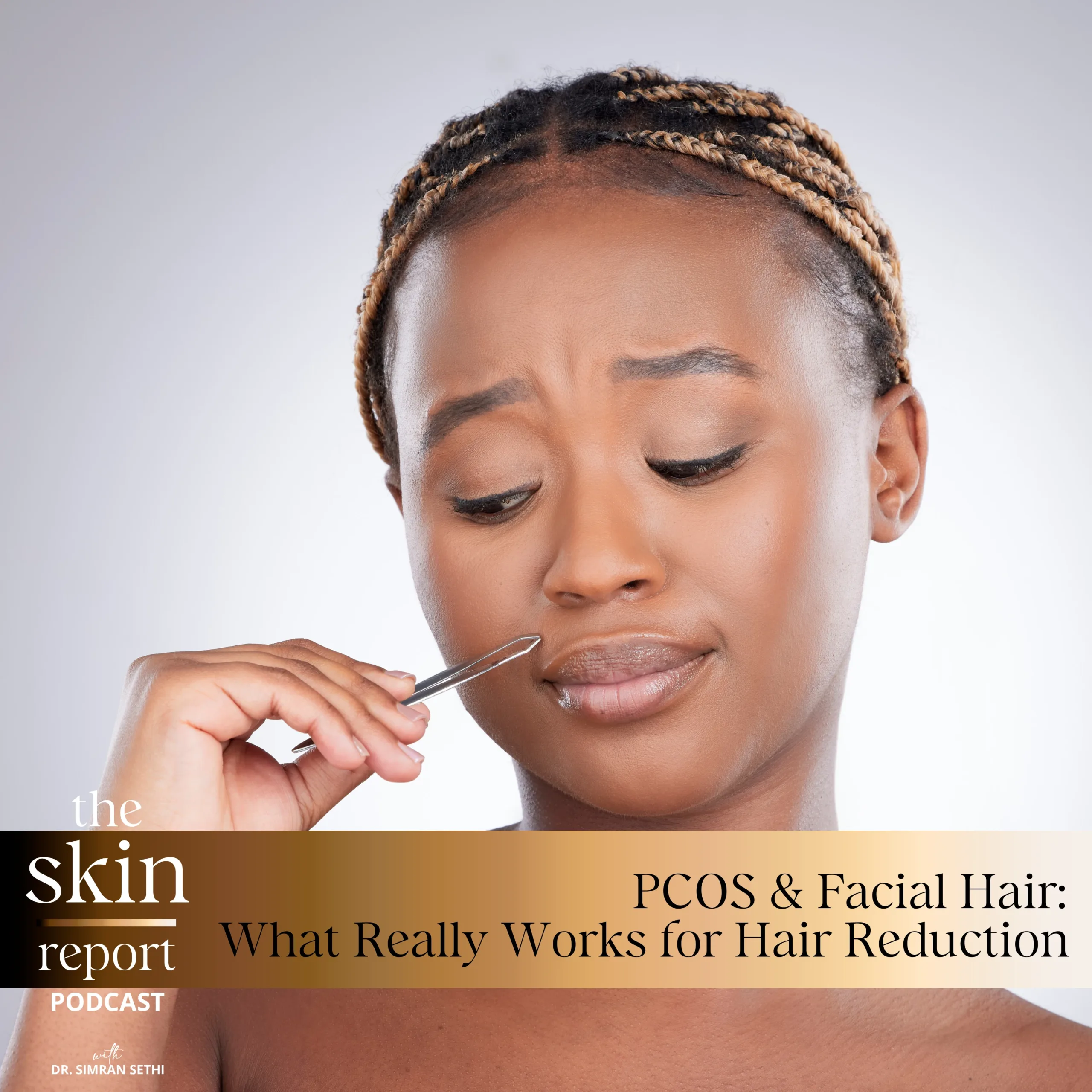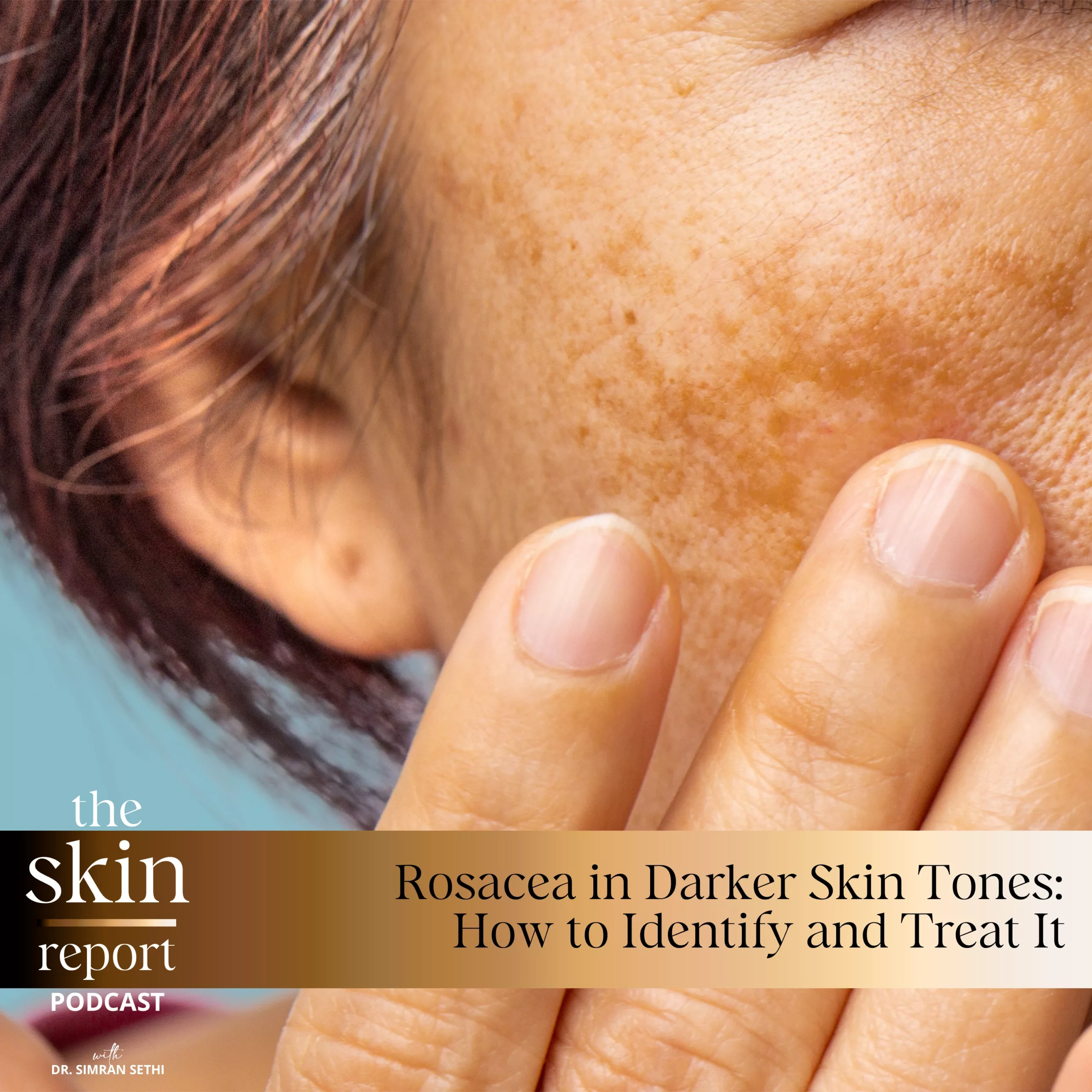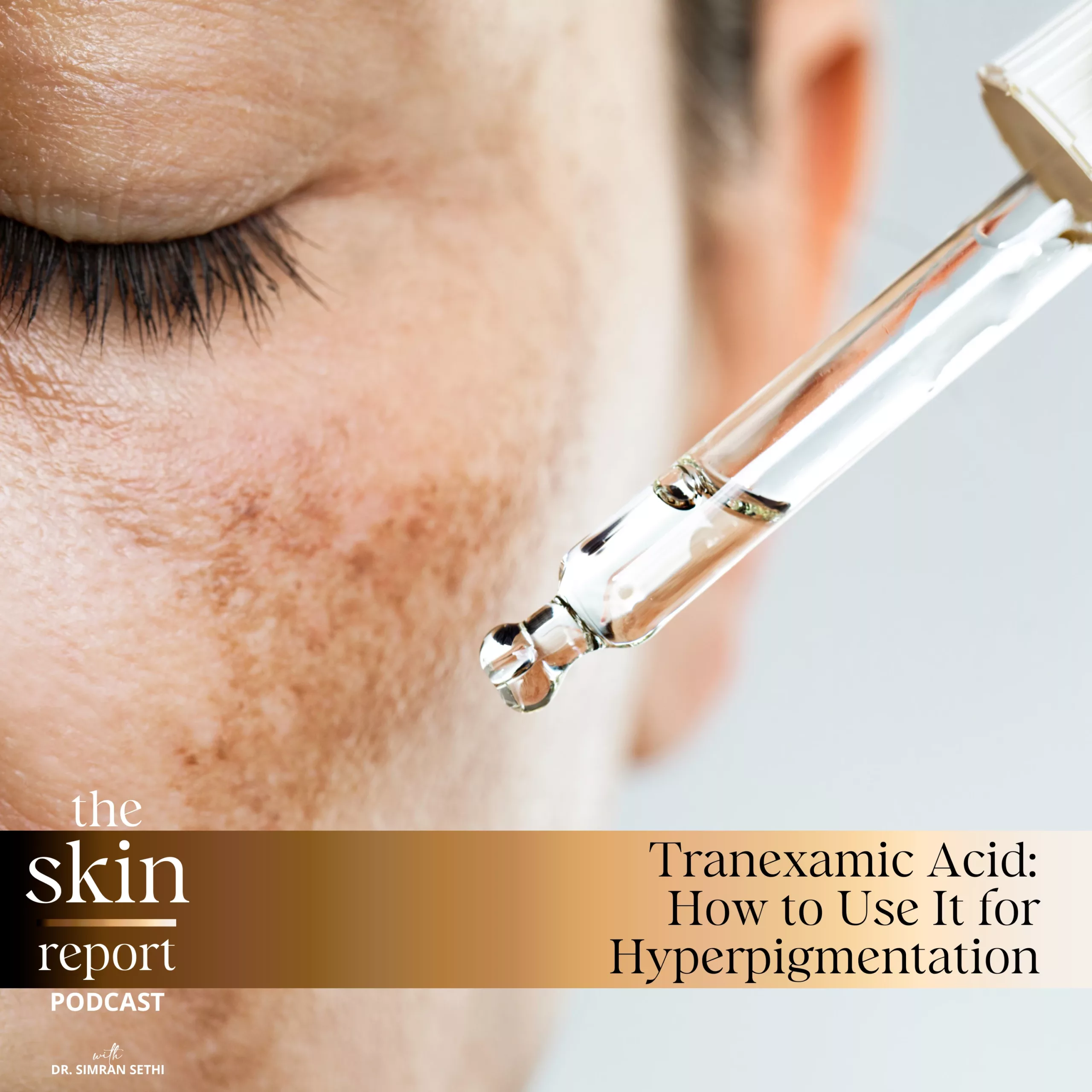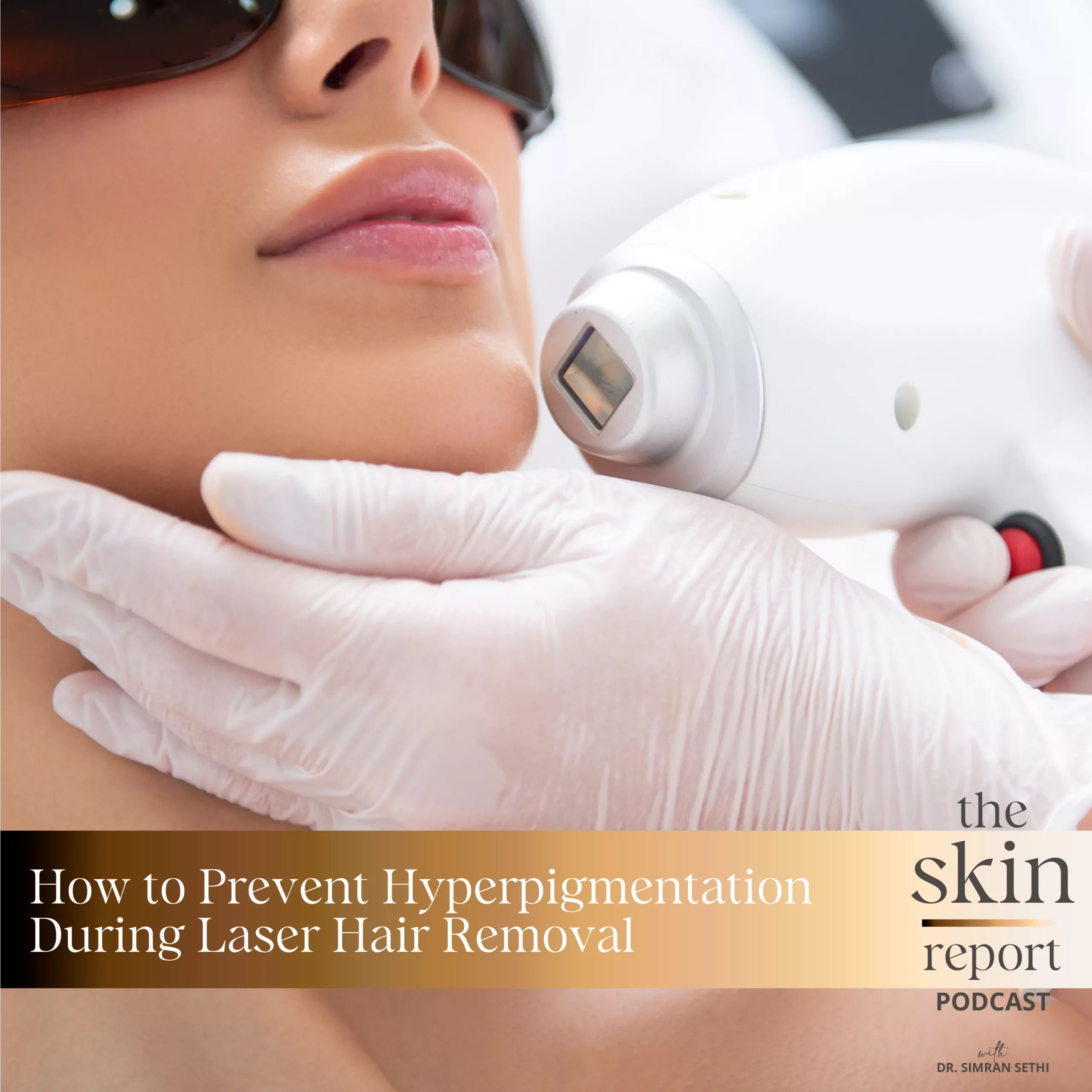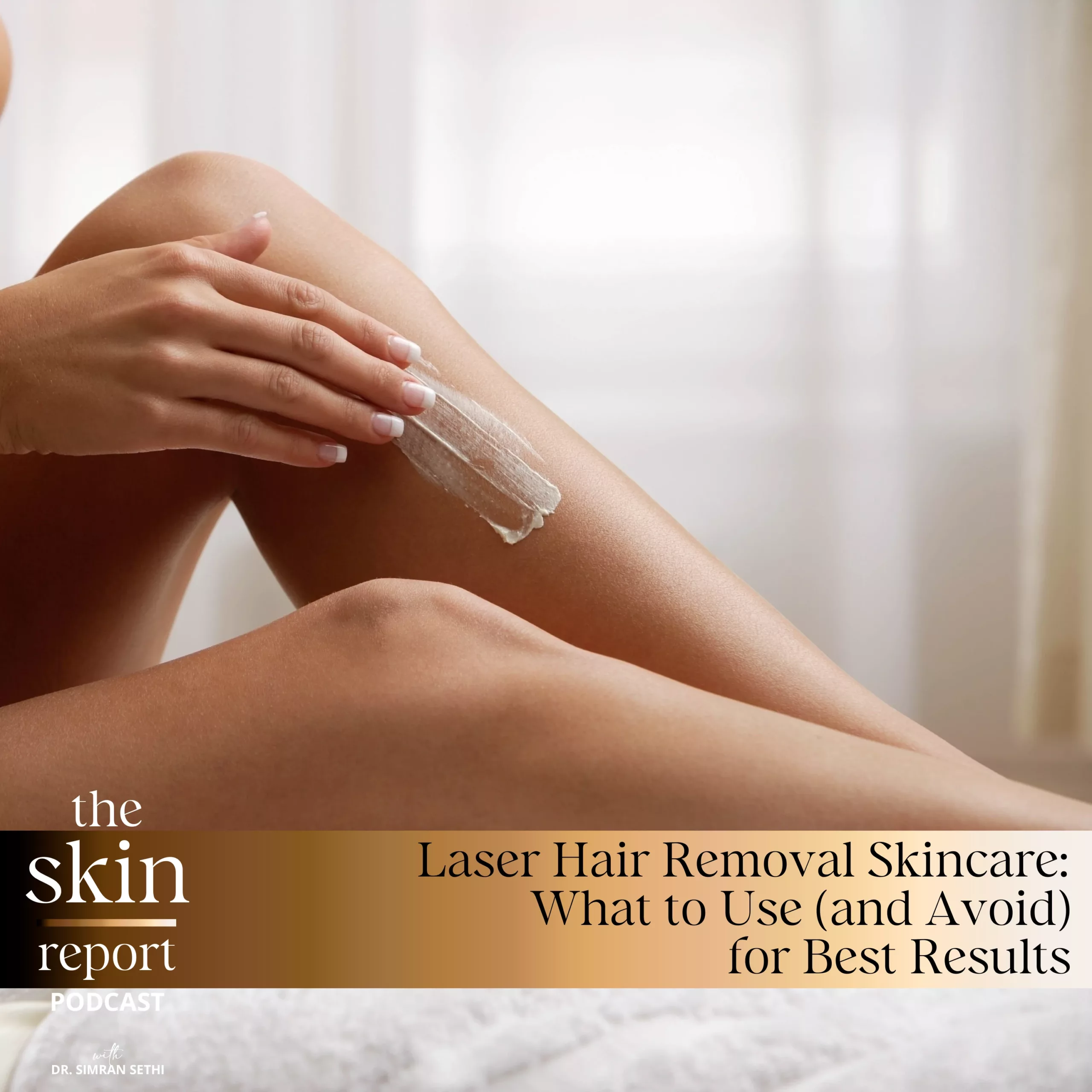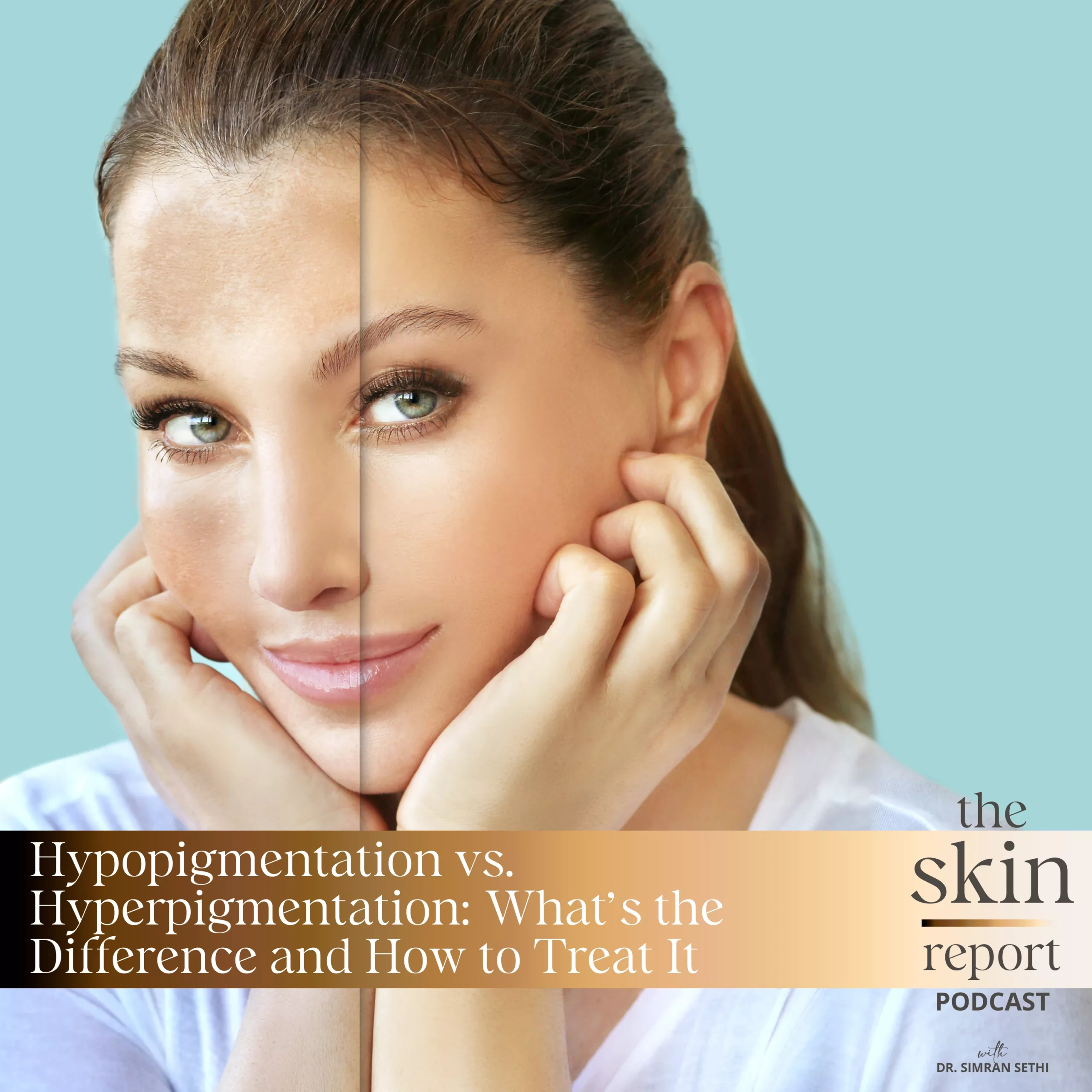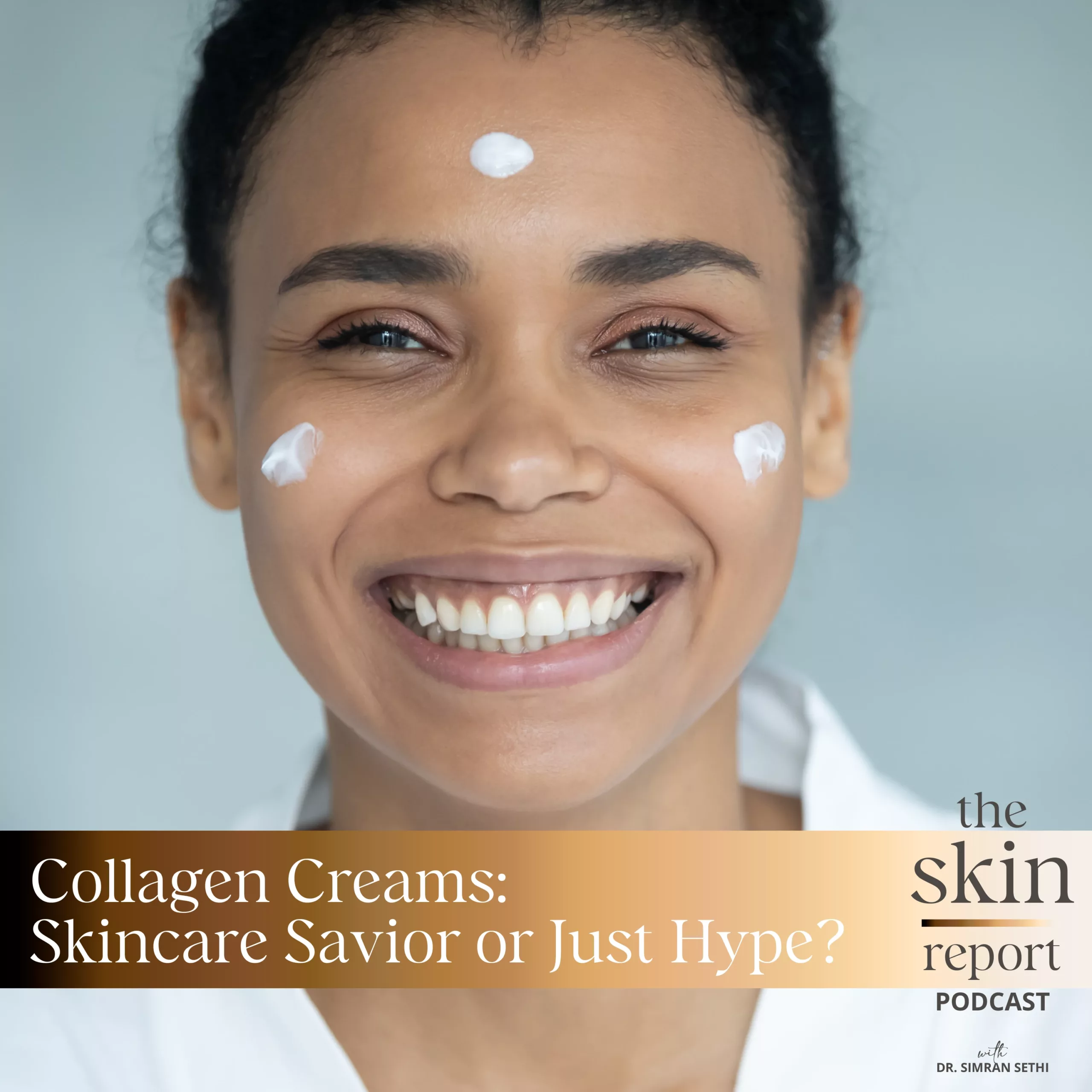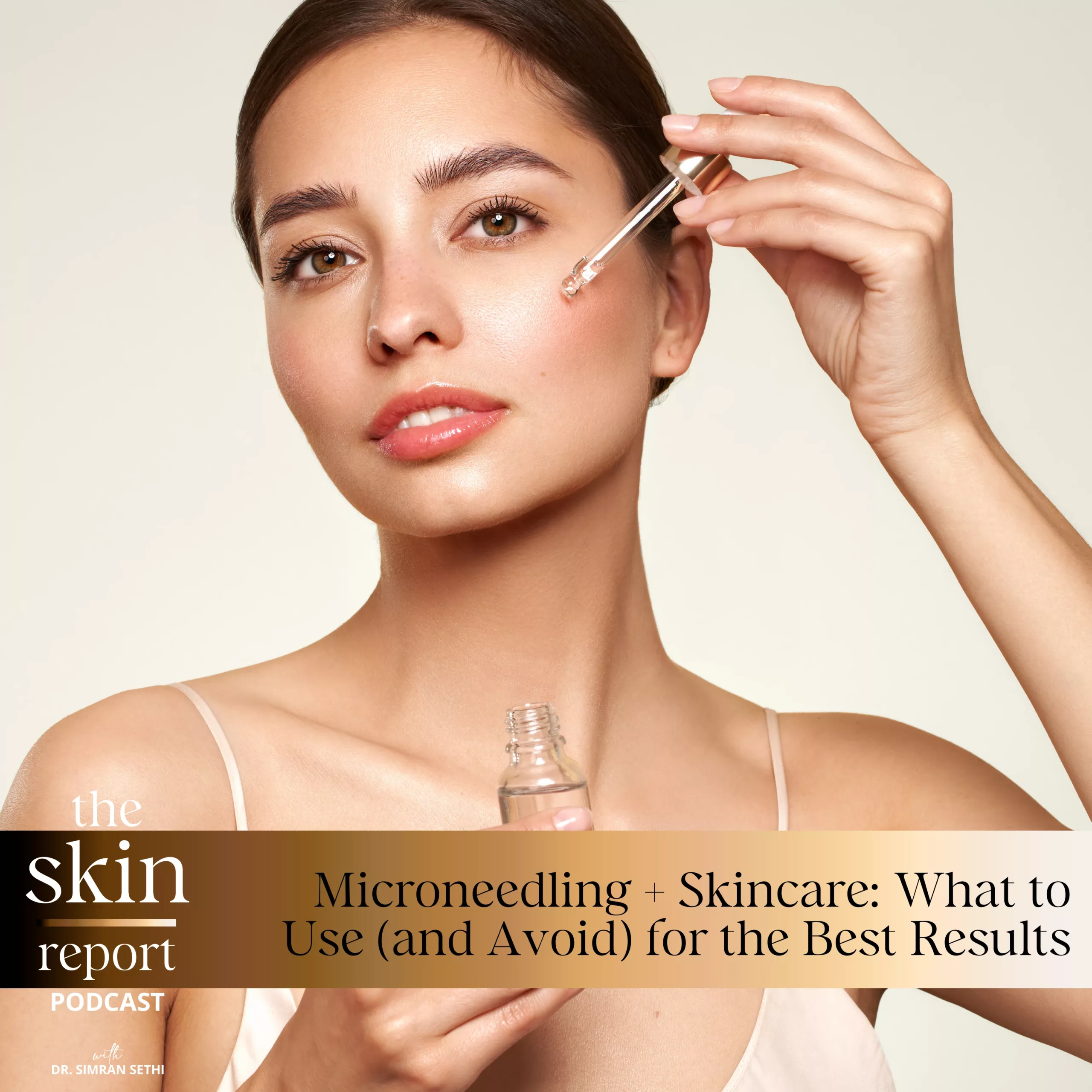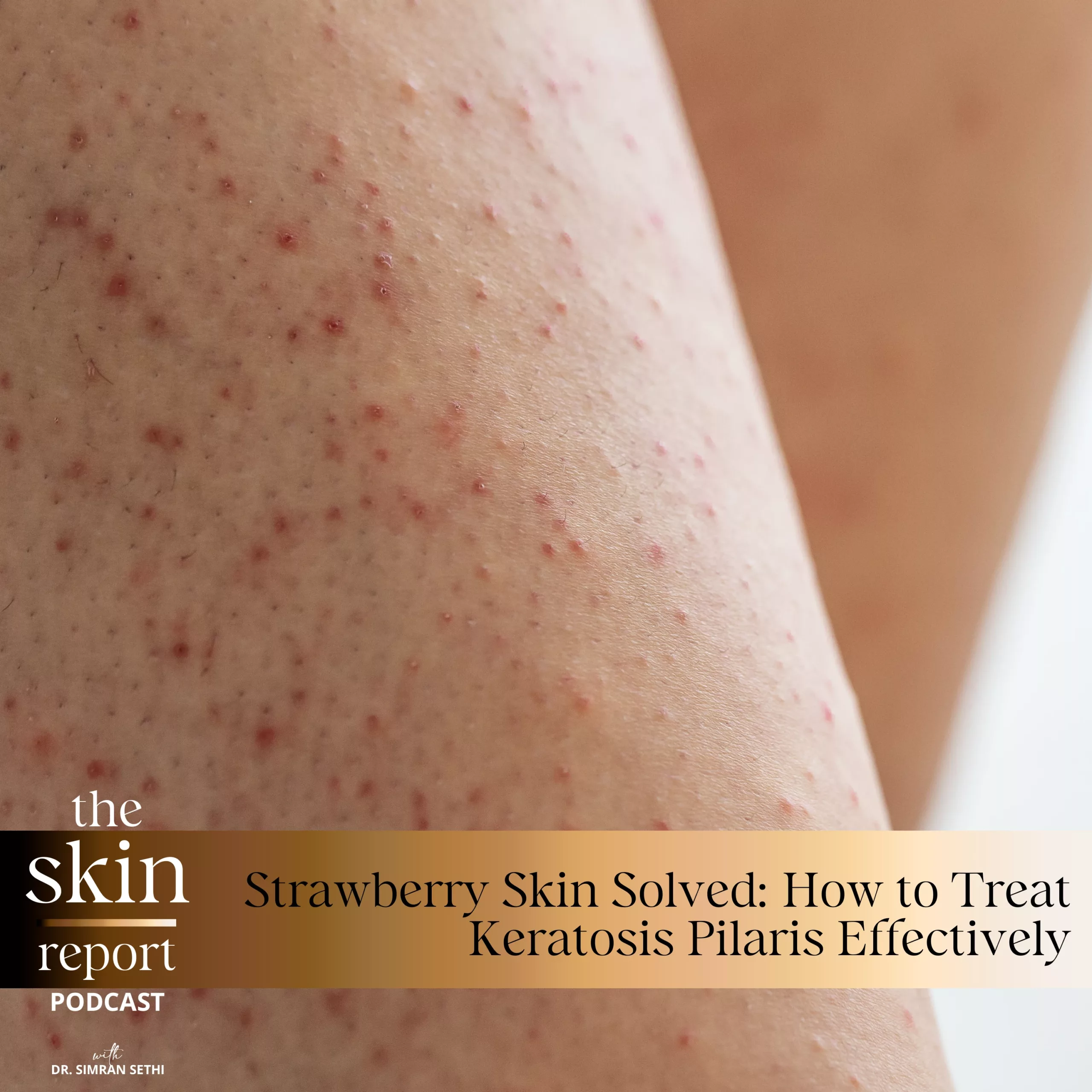Optimizing Your Daytime Skincare:
Expert Advice for All Skin Tones
Join Dr. Sethi and co-host Shaheera on “The Skin Report” as they delve into crating the ideal daytime skincare routine. In this episode, they explore how various skin tones respond differently to environmental stressors like blue light exposure and discuss the fundamental steps for maintaining healthy skin. They debunk common skincare myths and offer tailored advice for minimal, yet effective, skincare regimens that suit a busy lifestyle. Whether you’re a skincare novice or enthusiast, this episode is packed with expert insights into optimizing your daily skincare routine based on skin tone, environmental factors, and product efficacy.
Exclusive Offer for the Skin Report Audience:
Use SKINREPORT20 in the shopping cart to receive 20% discount
LEARN MORE!
The Skin Report Podcast : Subscribe and Download!
Skin By Dr. Sethi – Blog
Skin By Dr. Sethi – Skincare
Skin By Dr. Sethi – Beauty Instagram
Dr. Sethi’s Medical Spa
Dr. Sethi’s Medical Spa – Instagram
Dr. Sethi:
Welcome to the Skin Report. Today we are going to talk about skin routines and specifically about the best optimized skin routine for daytime, and I’m also going to break it down by skin tone. So before I start though, I want to remind you that if you enjoy learning about beauty, skincare, skin treatments and those that are especially specified for skin of color, do follow us, like and ask us any questions in the comments. So I’m going to go ahead and start today with our co-host Shaheera. Hey Shaheera.
Shaheera:
Hi. I think for a lot of people they overemphasize, they may be overdoing their day-to-day skincare routine. Some people use up to 12 products and that doesn’t even include makeup and whatever they use in the shower.
Dr. Sethi:
Yeah, well, I think there’s a lot of K beauty and K beauty trends that are big on a lot, and I like layering products and we’ll talk about that. But yes, you’re right. Maybe sometimes too much or too little done.
Shaheera:
Yes. For daytime, we’ve got not only the sun, we’ve got what we do day-to-day, jobs, where we go. There are other different environmental factors that can impact the skin, good, mostly bad-
Dr. Sethi:
Yeah. I don’t know about any good factors other than what you would do to yourself, but yes.
Shaheera:
Right. I know I was trying to be really nice to the environment, but skincare wise, what is the first and foremost thing someone should do when they wake up in the morning? Obviously brush their teeth, hopefully. What should they put on their skin? What’s the first step of their skincare routine?
Dr. Sethi:
I know that when it comes to skincare routines, not everyone is a fan of multi-step skincare routines, but I think that you should have at least three and it should take you no more than a minute. Very first step, wash your face. There is a lot of misconception about whether you should wash your face in the morning or not, because there are influencers or people who say that that’s going to take out the natural oils from your skin and make your skin dry. Or if you have dry or mature skin, your skin’s already dry. So you’re thinking, “Well, if I wash it’s just going to worsen, right?”
Dr. Sethi:
That’s not true. You have to exfoliate to some extent in the morning, and cleansing is a form of exfoliation. You are going to produce a lot of new skin at night when you’re sleeping, and we’ll talk about that about when we get to our episode on nighttime skin routines. But you have to wash your face even if you have dry skin, even if you have mature skin. Otherwise, you are going to not have removed all that dead skin from your skin so that whatever you apply on it is actually going to sink into it. You’re right. You’re just going to create a barrier of dead skin.
Shaheera:
My skin feels clean. It feels really polished. It looks really clear. That doesn’t mean your skin is not actively replenishing itself, which replenishment and repair, that involves your skin sloughing off any kind of dead skin cells.
Dr. Sethi:
Yes. And as you make new skin, you are constantly sloughing off old skin. Step number two, some sort of serum that has antioxidants to give you sort of a continuous repair from environmental damage. And just because you’re not outside and you’re working primarily inside, you are still sustaining environmental damage because we have a lot of blue light inside, not only from computer screens, but even the LED lights in our home or office.
Shaheera:
Like this giant light that’s on me.
Dr. Sethi:
That’s right. We are actively getting exposed to blue light right now, but we have been safeguarded with good skincare that has blue light protection in it.
Shaheera:
Yeah, and it could be a multipurpose skincare product that doesn’t have, you don’t need a blue light protection specific product. It can be built in. In your line, you have built-in blue light protection products-
Dr. Sethi:
Yeah, and multiple serums.
Shaheera:
It’s just not always obvious because it’s not on the label, which it should be.
Dr. Sethi:
Correct. So now let me talk about blue light because this is where that skin tone specific damage becomes pertinent. In lighter skin tone, skin types one through three, the blue light actually goes so deep that it breaks down fat underneath our skin. So it actually breaks down collagen in the dermis. It breaks down fat, which keeps our skin lifted.
Shaheera:
That’s for specifically lightest to medium skin tone?
Dr. Sethi:
Yes.
Shaheera:
Okay.
Dr. Sethi:
But in skin types four through six, that’s people of Asian, South Asian, African descent, Middle Eastern descent. The blue light actually causes hyperpigmentation, so it worsens dark spots or creates dark spots, which is why you have to have blue light protection no matter what skin tone you have.
Dr. Sethi:
And you can get that in the serum you’re using. It has to say that it gives you blue light protection or your sunscreen. And remember, sunscreen is an important step for any daytime routine, even if you are sitting at home all day, because honestly, you probably have windows, but if your sunscreen has blue light protection, it’s going to give you protection from indoor lighting and environmental damage. And it’s also protecting you from blue light from screens. Now most sunscreens don’t have blue light protection. You would have to use a sunscreen that states that it does.
Shaheera:
Yeah, and we actually have an ingredients overview video and episode about these sort of blue light protecting ingredients to look out for no matter what brand that you choose to purchase from. One other thing I want to really talk about are the have it all products, the BB creams, the CC creams, the concealer with skincare, built in SPF products that are in your makeup. What do you think about all of that? Are they even effective enough? What are they even protecting you from-
Dr. Sethi:[inaudible 00:06:24] Yes. They’re not effective actually. And I personally have very strong feelings about the use of makeup or BB creams and CC creams for skincare, and there are makeup lines that are marketed for as a, this is healthy for your skin and it can be your skincare. No. Just like we use dosage in medicine, a dose of this much is actually going to create an effect. Skincare is no different. You need to have enough dosage of an active ingredient. That’s why I will always tell you and talk to you about using medical grade skincare, right? Because the dosage of the active ingredients is a big factor in the success of your skincare-
Shaheera:
And the absorption value.
Dr. Sethi:
Exactly. The absorption where it’s reaching. But if you try to put into one drop of a product, your replenishment or your repair antioxidants, your sunscreen, and then pigment for makeup, well, there’s not enough room in that drop to deliver the active ingredients needed to create that skincare to basically replicate what you would do in a multi-step routine.
Shaheera:
Don’t use a hundred drops of BB cream because you think the dosage is going to be higher.
Dr. Sethi:
Correct. Because then you probably will not like how you look anyway. So yes, that’s correct.
Shaheera:
When it comes to heat from daytime, depending on the climate, depending on the season, does that play a huge factor as well in just overall skincare routine for daytime or just specific skin concerns?
Dr. Sethi:
No, I think heat, not light, heat is more problematic for people who suffer from a skin condition called melasma.
Shaheera:
And that’s like day to night, that doesn’t matter.
Dr. Sethi:
Exactly.
Shaheera:
Okay.
Dr. Sethi:
Exactly.
Shaheera:
The ideal skincare routine, you say for a minimalist, how many products do you think that is?
Dr. Sethi:
I would say just three products. Cleanse, apply a serum that has antioxidants in it. Maybe it will also have blue light protection and then a sunscreen that has blue light protection. And I think that’s-
Shaheera:
Moisturizer, hyaluronic acid?
Dr. Sethi:
The serum should be your moisturizer and basically, I mean you can add-
Shaheera:
I think that’s the most minimalist.
Dr. Sethi:
That’s the most minimal. You can add things to it, it’ll make it only better and stronger. But I don’t think that you should feel that if you can’t do a full routine, that you can’t do a routine.
Shaheera:
Those are your three investment products.
Dr. Sethi:
Yes.
Shaheera:
Like, hey, if you’re going to buy anything, just buy these-
Dr. Sethi:
Yeah, buy just those three.
Shaheera:
… and then use whatever you need. Is there anything else we haven’t covered?
Dr. Sethi:
I think simple, but at least understanding one product’s not going to do it. Let’s do at least three. It should take you less than a minute.
Shaheera:
Yeah. I mean I’m looking forward to the nighttime routine.
Dr. Sethi:
Yes. And that’s a whole other routine. But thank you so much for listening to us today. And of course, if you enjoy this kind of content, please like, subscribe and ask us any questions and comments.



